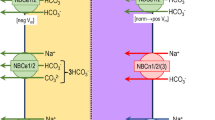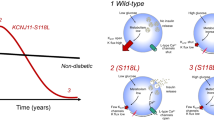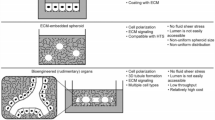Abstract
The solute carrier family 45 a3 member (SLC45A3), known also as prostein, has been implicated with prostate cancer and the regulation of lipid metabolism in oligodendrocytes. Recently, we expressed SLC45A3 in yeast cells and characterised it as a proton-coupled sucrose symporter. However, the physiological functions of SLC45A3 were still unknown. Here, we report that SLC45A3 occurs in the kidney and is highly expressed in the medullary collecting duct (IMCD), a part of the kidney responsible for final urine concentration and faced to hyperosmotic environment. Moreover, messenger RNA (mRNA) expression of endogenous SLC45A3 in rat IMCD cells as well as in NRK52E cells increased up to four-fold under hyperosmotic conditions at 600 mOsmol/kg. Using NRK52E cells as an experimental model, we investigated the proton-coupled sugar transport and found that the uptake of sucrose or glucose was enhanced by hyperosmolarity. Down-regulation of expression by small interfering RNA (siRNA) decreased the osmotically inducible part of sucrose uptake and confirmed the involvement of SLC45A3 in this process. Furthermore, we observed an up to four-fold elevation of sucrose uptake triggered by hyperosmolarity across the apical membrane of NRK52E cells, while uptake across the basolateral membrane was not affected. Due to this finding, we conclude that SLC45A3 may occur at the luminal side of kidney epithelial cells and thus may take up solutes from the tubular fluid. Altogether, we show that SLC45A3 is a novel sugar transporter in kidney and hypothesise that the disaccharide sucrose, and probably the monosaccharides glucose and fructose, may serve as compatible osmolytes in urine.










Similar content being viewed by others
References
Bagnasco S, Balaban R, Fales HM, Yang YM, Burg M (1986) Predominant osmotically active organic solutes in rat and rabbit renal medullas. J Biol Chem 261:5872–5877
Bartolke R, Heinisch JJ, Wieczorek H, Vitavska O (2014) Proton-associated sucrose transport of mammalian solute carrier family 45: an analysis in Saccharomyces cerevisiae. Biochem J 464:193–201
Becanovic K, Pouladi MA, Lim RS, Kuhn A, Pavlidis P, Luthi-Carter R, Hayden MR, Leavitt BR (2010) Transcriptional changes in Huntington disease identified using genome-wide expression profiling and cross-platform analysis. Hum Mol Genet 19:1438–1452
Bissonnette P, Coady MJ, Lapointe JY (2004) Expression of the sodium-myo-inositol cotransporter SMIT2 at the apical membrane of Madin-Darby canine kidney cells. J Physiol-London 558:759–768
Boles E, Hollenberg CP (1997) The molecular genetics of hexose transport in yeasts. FEMS microbiology reviews 21:85–111
Bouatra S, Aziat F, Mandal R, Guo AC, Wilson MR, Knox C, Bjorndahl TC, Krishnamurthy R, Saleem F, Liu P, Dame ZT, Poelzer J, Huynh J, Yallou FS, Psychogios N, Dong E, Bogumil R, Roehring C, Wishart DS (2013) The human urine metabolome. Plos One 8:e73076
Burg MB, Ferraris JD (2008) Intracellular organic osmolytes: function and regulation. J Biol Chem 283:7309–7313
Burg MB, Ferraris JD, Dmitrieva NI (2007) Cellular response to hyperosmotic stresses. Physiol Rev 87:1441–1474
Cui W, Taub DD, Gardner K (2007) qPrimerDepot: a primer database for quantitative real time PCR. Nucleic Acids Res 35:D805–809
Daniel H, Spanier B, Kottra G, Weitz D (2006) From bacteria to man: archaic proton-dependent peptide transporters at work. Physiol (Bethesda) 21:93–102
Faghiri Z, Camargo SM, Huggel K, Forster IC, Ndegwa D, Verrey F, Skelly PJ (2010) The tegument of the human parasitic worm Schistosoma mansoni as an excretory organ: the surface aquaporin SmAQP is a lactate transporter. Plos One 5:e10451
Hager K, Hazama A, Kwon HM, Loo DD, Handler JS, Wright EM (1995) Kinetics and specificity of the renal Na+/myo-inositol cotransporter expressed in Xenopus oocytes. J Membr Biol 143:103–113
Joosen AM, Kuhnle GG, Runswick SA, Bingham SA (2008) Urinary sucrose and fructose as biomarkers of sugar consumption: comparison of normal weight and obese volunteers. Int J Obes 32:1736–1740
Kawasaki T, Akanuma H, Yamanouchi T (2002) Increased fructose concentrations in blood and urine in patients with diabetes. Diabetes Care 25:353–357
Kouadjo KE, Nishida Y, Cadrin-Girard JF, Yoshioka M, St-Amand J (2007) Housekeeping and tissue-specific genes in mouse tissues. BMC Genomics 8:127
Lee JW, Chou CL, and Knepper MA (2015) Deep sequencing in microdissected renal tubules identifies nephron segment-specific transcriptomes. J Am Soc Nephrol 26(1):121–132
Lenz J, Hofer M, Sigler K (1997) Model of specific, apparently non-saturable solute uptake kinetics based on a carrier mechanism. Folia Microbiol 42:234–236
Leung KY, Mills K, Burren KA, Copp AJ, Greene ND (2011) Quantitative analysis of myo-inositol in urine, blood and nutritional supplements by high-performance liquid chromatography tandem mass spectrometry. J Chromatography B, Analytical Technol Biomed Life Sciences 879:2759–2763
Maric K, Oksche A, Rosenthal W (1998) Aquaporin-2 expression in primary cultured rat inner medullary collecting duct cells. Am J Physiol-Renal 275:F796–F801
Nakanishi T, Turner RJ, Burg MB (1989) Osmoregulatory changes in myo-inositol transport by renal cells. Proc Natl Acad Sci U S A 86:6002–6006
Riethmuller C, Oberleithner H, Wilhelmi M, Franz J, Schlatter E, Klokkers J, Edemiry B (2008) Translocation of aquaporin-containing vesicles to the plasma membrane is facilitated by actomyosin relaxation. Biophys J 94:671–678
Shimokawa N, Okada J, Haglund K, Dikic I, Koibuchi N, Miura M (2002) Past-A, a novel proton-associated sugar transporter, regulates glucose homeostasis in the brain. J Neurosci 22:9160–9165
Shin D, Howng SY, Ptacek LJ, Fu YH (2012) miR-32 and its target SLC45A3 regulate the lipid metabolism of oligodendrocytes and myelin. Neuroscience 213:29–37
Spandidos A, Wang X, Wang H, Seed B (2010) PrimerBank: a resource of human and mouse PCR primer pairs for gene expression detection and quantification. Nucleic Acids Res 38:D792–799
Tasevska N, Runswick SA, McTaggart A, Bingham SA (2005) Urinary sucrose and fructose as biomarkers for sugar consumption. Cancer Epidemiol Biomarkers Prev 14:1287–1294
Vinet B, Panzini B, Boucher M, Massicotte J (1998) Automated enzymatic assay for the determination of sucrose in serum and urine and its use as a marker of gastric damage. Clinical Chemistry 44:2369–2371
Vitavska O, Wieczorek H (2013) The SLC45 gene family of putative sugar transporters. Mol Aspects Med 34:655–660
Wang S, Tsun ZY, Wolfson RL, Shen K, Wyant GA, Plovanich ME, Yuan ED, Jones TD, Chantranupong L, Comb W, Wang T, Bar-Peled L, Zoncu R, Straub C, Kim C, Park J, Sabatini BL, Sabatini DM (2015) Metabolism. Lysosomal amino acid transporter SLC38A9 signals arginine sufficiency to mTORC1. Science 347:188–194
Wishart DS, Jewison T, Guo AC, Wilson M, Knox C, Liu Y, Djoumbou Y, Mandal R, Aziat F, Dong E, Bouatra S, Sinelnikov I, Arndt D, Xia J, Liu P, Yallou F, Bjorndahl T, Perez-Pineiro R, Eisner R, Allen F, Neveu V, Greiner R, Scalbert A (2013) HMDB 3.0—the Human Metabolome Database in 2013. Nucleic Acids Res 41:D801–807
Wright EM, Turk E (2004) The sodium/glucose cotransport family SLC5. Pflugers Arch 447:510–518
Xu J, Kalos M, Stolk JA, Zasloff EJ, Zhang X, Houghton RL, Filho AM, Nolasco M, Badaro R, Reed SG (2001) Identification and characterization of prostein, a novel prostate-specific protein. Cancer Res 61:1563–1568
Acknowledgements
We thank Margret Düvel and Sabine Heuer for excellent technical assistance. Thanks also to Prof. Birgitta Burckhardt and Prof. Gerhard Burckhardt for many helpful discussions and for reading of the manuscript.
This work was supported by the Deutsche Forschungsgemeinschaft (VI 673/2-1, WI 698/7-1) and by the “Incentive Award of the Faculty of Biology/Chemistry” of the University of Osnabrück.
Author information
Authors and Affiliations
Corresponding author
Rights and permissions
About this article
Cite this article
Vitavska, O., Edemir, B. & Wieczorek, H. Putative role of the H+/sucrose symporter SLC45A3 as an osmolyte transporter in the kidney. Pflugers Arch - Eur J Physiol 468, 1353–1362 (2016). https://doi.org/10.1007/s00424-016-1841-6
Received:
Revised:
Accepted:
Published:
Issue Date:
DOI: https://doi.org/10.1007/s00424-016-1841-6




